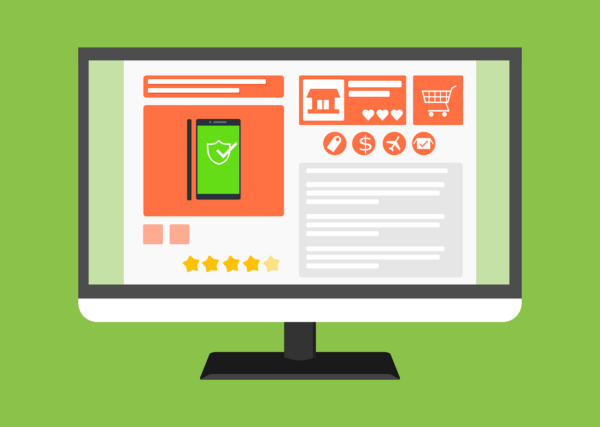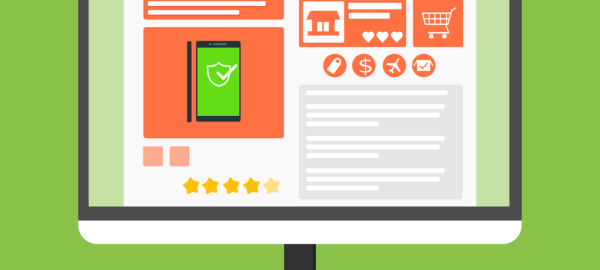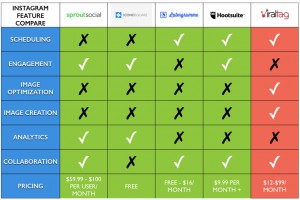
200degrees / Pixabay
Are you struggling to pick up the right e-commerce strategies that will help drive traffic, conversions, and sales?
Well, the thing is, marketing is one of the most important aspects that you need to consider when launching an e-commerce store.
Once you have chosen products to sell, you might be wondering how you can drive more traffic to your site and convert it to sales.
There are a lot of strategies at your disposal, and if you fail to choose the right ones, all your efforts will be in vain.
So, which strategy should you pick? How do you choose the best strategies that work for your e-commerce website?
What is Ecommerce Marketing?
Let’s first define what e-commerce marketing is.
In a nutshell, it is making sales by enhancing consciousness about an online store’s brand or product offerings, and promoting your store to your target audience through various marketing channels.
The main goal here is to get people who are interested in your products to purchase from you.
Here are nine proven e-commerce marketing techniques that will help you boost your online sales:
1. Upsell relevant products
You’ve probably heard the phrase “would you like to upsize your order?” This is an example of upselling, wherein one is selling to the customer a more premium version of the product, than what the customer is originally considering.
For a lot of businesses, upselling is more effective than acquiring a new customer.
There are times that customers are not aware that a premium product is available, or they simply need to understand how an upgrade will better fit their needs. Hence, there are two primary considerations when using upselling to boost sales:
- Ensure that your upsells are related to the original product.
- It should be sensitive to your customer’s anticipated price range.
Ideally, the product that you want to upsell still fits the original needs of the customer.
Although they might initially be enthusiastic about the price point (as they already have an anchor price in mind) the new product you’re offering should be discernibly a better fit than the previous product and should be worth the additional cost.
2. Create a sense of urgency
You need to be transparent of who you are, as well as what you do. At the same time, you should also create a sense of urgency to encourage customers to purchase.
Most of them respond to positive incentives that build a sense of urgency, like limited edition products or time-sensitive product offerings. Moreover, some strategies are more effective than others.
For instance, if you can’t offer limited edition products to entice your customers, you can offer them free shipping or a discount as an alternative.
How to create a sense of urgency
Here are some crafty ways how you can create a sense of urgency to entice prospects to make a purchase:
- Show stock levels. You may add alerts that indicate your current stock levels. An obvious example here is to notify customers if an item is already low in stock.
- Sell limited-edition products. A lot of marketers are always using this strategy (selling limited edition pieces) as it creates a sense of urgency among buyers.
- Show how many people are interested. Another way to ramp up buyer competitiveness is to show how many people are viewing or “thinking of buying” a certain product.
- Display how many people bought in the last 24 hours. Create scarcity by tying concrete and definite information with the limited availability of an item. Showing your current stock levels is an effective way to do this. Another way is to alert your customers of the number of people who have purchased in the last 24 hours.
3. Use live chat
With a live chat feature, it’s easy for customers to ask questions and voice out their concerns before ultimately making a purchase.
This helps you boost your conversion rates, and create an excellent shopping experience for your brand.
A live chat feature will also help you know the most common problem that is often experienced by your customers. This can come in handy in resolving customer issues and improving your sales.
Hence, it is important to take this feature into consideration when selecting the best plugin for your e-commerce site.
Why should you use live chat?
- Live chat is 400% less expensive. Live chat helps companies cut costs. It decreases phone expenses, as well as the volume of phone calls that your customer support team receives.
- Live chat reduces bounce rate. This metric represents the quality of your site traffic. High bounce rates not only hurt your site in terms of ranking, but it can also lead to a drop in rankings. You can reduce your bounce rate by integrating a live chat feature on your site. That way, customers can reach out to you anytime if they have questions about a specific product, and allowing them to be more convinced of purchasing it.
- Live chat helps in accumulating data. This feature allows your brand to interact with numerous customers, which helps you accumulate important data over time, like their common paints points or preferred products. This allows you to improve your products and services.
4. Start a blog
Whether you are already a big brand or just starting out, blogging will allow you to reach out to new prospects while continuously engaging with your existing ones.
Developing a retail blog will allow you to develop a competitive advantage over your competitors, give them expert advice, and increase the visibility of your brand.
You can also deliver them valuable and helpful content, which is a lucrative marketing method for retailers of all shapes and sizes. For instance, you are a WordPress plugin developer, and one of your users is experiencing an issue with one of your plugins.
Instead of passing them to customer support, you can simply send a link on what your user can do in case a plugin crashes a website.
User-generated content
Creating user-generated content will make potential customers be more confident to purchase from you. When users see more honest and genuine feedback from other satisfied customers, they are more likely to buy from you, which can help increase your sales.
Add a personal touch
Shopping online could be impersonal at times.
Sure, an online customer can add an item to a cart, but that does not necessarily translate to a “rich experience.”
Hence, it is important that customers can have a personalized experience. Something as simple as having an exit pop-up that addresses them by their first name will do. Doing so can help elevate their e-commerce experience.
Internal linking
A lot of SEO pros use internal linking. However, only a few brands use it properly.
In fact, you would be surprised that the majority of e-commerce pages only contain one or a few links, with most of which are dead. This means that you should create link redirects when necessary.
Nonetheless, you should utilize your blog as a way to tie back to your products. For example, your new posts should backlink to your older blog posts or to a particular product page.
5. Secure your website
Nobody wants to go around shopping on a site that looks sketchy or untrustworthy. That’s why it is so important to secure your website.
One of the major concerns of shoppers is cybersecurity. The security of their information is the primary concern of most shoppers these days. That’s why you need to be more aware of this and make the necessary adjustments.
One way to prove that your site is trustworthy is to show the security badges that your site is using. Just make sure that when displaying these badges, it is true and you are not misleading customers. Otherwise, you could place yourself in legal trouble.
So, if you are using Norton or Google TS, and you do not have a badge displayed on your site yet, you need to change it as soon as possible.
6. Arrange a contest
Ah, contests and giveaways. The power of this kind of marketing should not be ignored.
Organizing contests allow you to capture your audience’s attention, making them one of the most engaging forms of marketing that you can leverage on.
It is also an excellent opportunity to showcase your products to a broader audience, especially if you pick a winner depending on the number of entries they have put in by providing a sharable referral link.
7. Use call to actions
Utilize a highlighted, attention-grabbing CTA or call-to-action above the fold of every webpage. Similarly, place your CTAs on other appropriate areas such as the middle-bottom of the page.
Also, make your CTA copy short and sweet.
Sadly, most businesses aren’t immune to these kinds of mistakes. In a survey of 200 enterprises, 70% of them don’t showcase clear CTAs, resulting in a tremendous loss of opportunity.
8. Encourage reviews
For most of your customers, the opinions of other people who have bought from you previously are important.
If there are currently no reviews on your product page, it is likely that potential customers will scour the Interwebs for online review. And this can be a missed opportunity for your part.
Meanwhile, reviews tell your customers that you’re open, honest, and more than qualified to sell the products that you’re offering. Better yet, you can encourage your past customers to guest post on your website to share their experience with your product.
Inviting people to guest post is easier nowadays since there are now author bix plugins that you can install on your website.
On the other hand, it is inevitable to receive a negative review. But instead of sulking, take this as part of your learning opportunity. Be gracious that someone left that feedback, and use it to improve your products and services.
Not to mention that addressing your customers’ concerns with grace is a great opportunity to showcase how people-centric your business is.
Keep all your reviews, both good and bad, as this shows people that you have absolutely nothing to hide. You can use this as an opportunity to leverage your customer service by resolving promptly the complainer’s issue.
By professionally dealing with their disappointments, and working on how to solve their problems, you’ll earn plus points to the eyes of your prospective customers.
9. Be active on social media
Brands and businesses launch their pages in the most popular social media platforms to connect with their target market. It is also a great way to post relevant content that their audience is interested in.
Being an e-commerce marketer, note that there are campaigns that you run that might look different on various social media platforms. Not to mention that not every platform would be tailored to your needs.
Because e-commerce sites are highly visual, you have to show off your products, because your success on social media mostly depends on the images you use to drive attention, website traffic, and sales.
Here are some popular social media platforms that you can consider:
Facebook is the biggest social media platform in the world and provides you with several sales options to implement.
With the platform’s ability to place a “Shop” tab on your business page, you can list a wealth of products, letting consumers purchase items directly on the platform.
Instagram (also owned by Facebook) is another attractive platform that you can use because it’s highly visual in nature.
It lets users tag brands and businesses in their own posts, as well as promote products that they find relevant.
Instagram Shopping also gives e-commerce brands the ability to build an “immersive storefront,” allowing users to explore products with just a single click.
Brands can also post anything about their products via their posts and stories, along with a clickable tag that curious visitors can click on. This tag can take them to a product description page that offers additional information.
Twitter is another fantastic platform e-commerce brands can use.
With over 800 million users, 52% of users are saying that they bought an item after seeing it first on Twitter.
Sharing information and linking your product pages on the platform is one of the best ways to start a conversation and driving traffic to your site.
What’s cool about Twitter is that you can always run ad campaigns here, targeting people based on who they follow and what kind of content they tweet.
Pinterest is a great platform, which particularly targets women ages 18 to 49.
That said, one particular feature that makes this platform quite interesting for e-commerce brands is rich pins. These provide users with links, references, and product recommendations for achieving a particular look, project design, decor objective, and so on.
If you want to cut through the noise and stand out from your competitors, these e-commerce marketing techniques are great starting points that your business can build on.
Digital & Social Articles on Business 2 Community
(45)
Report Post





